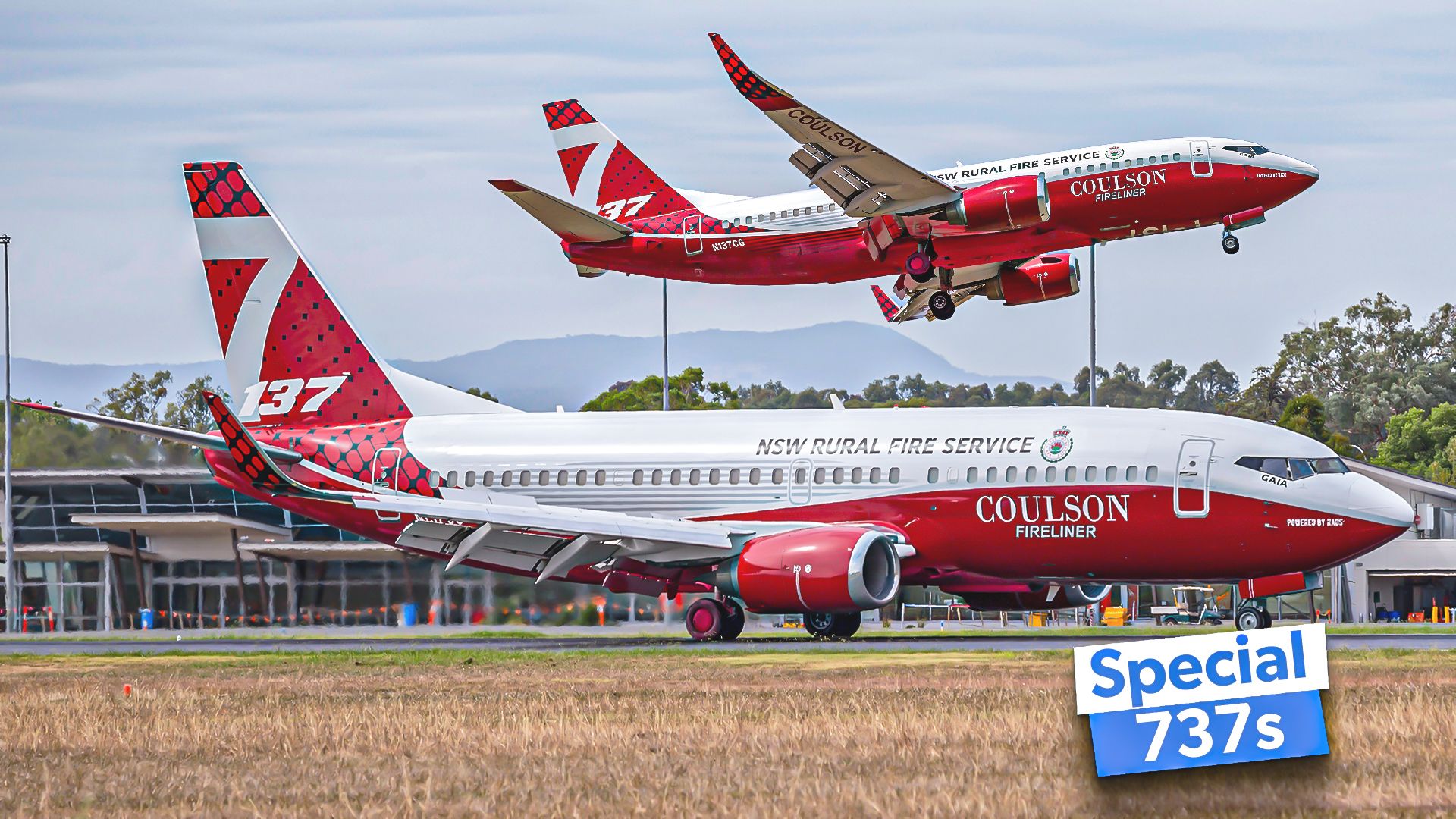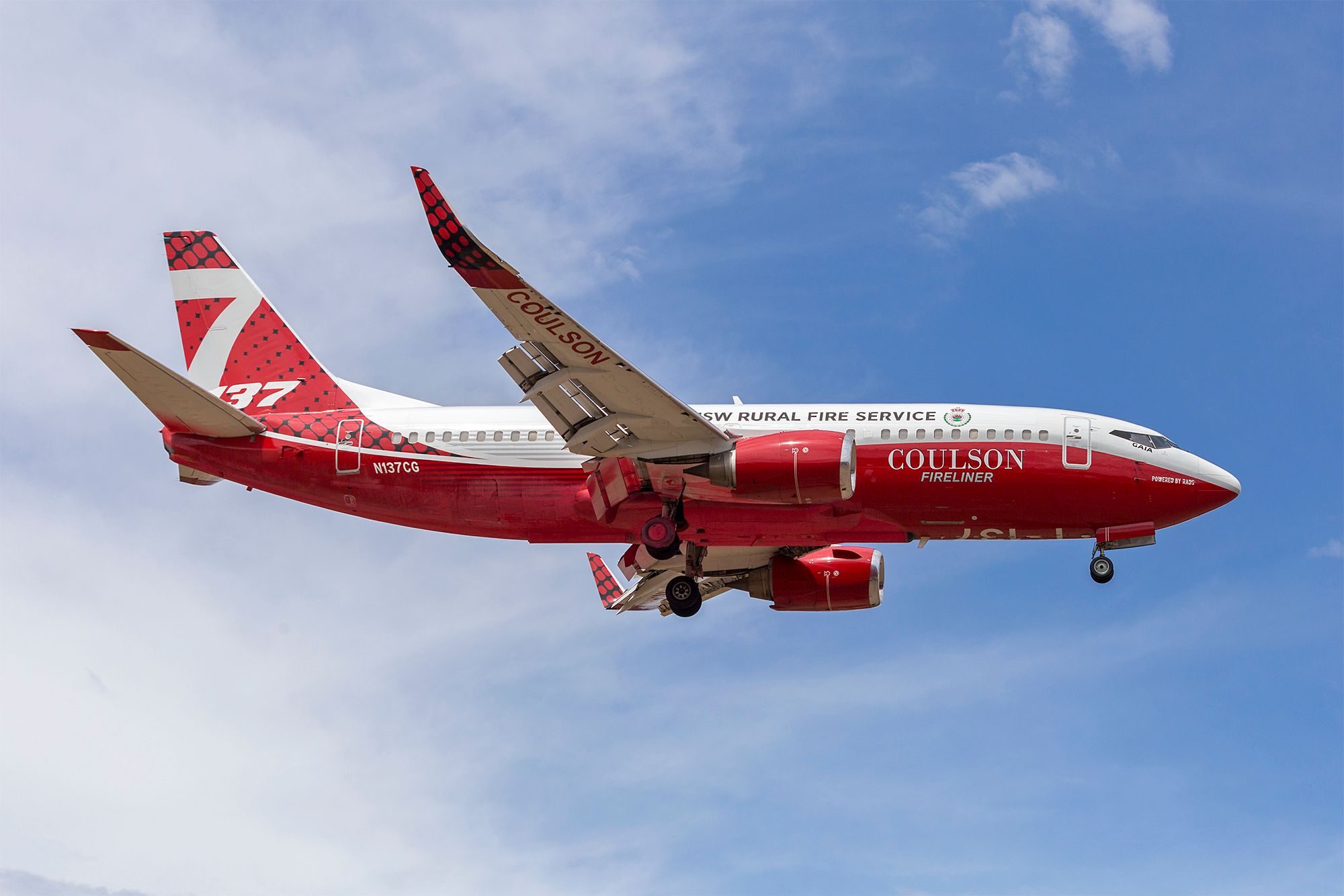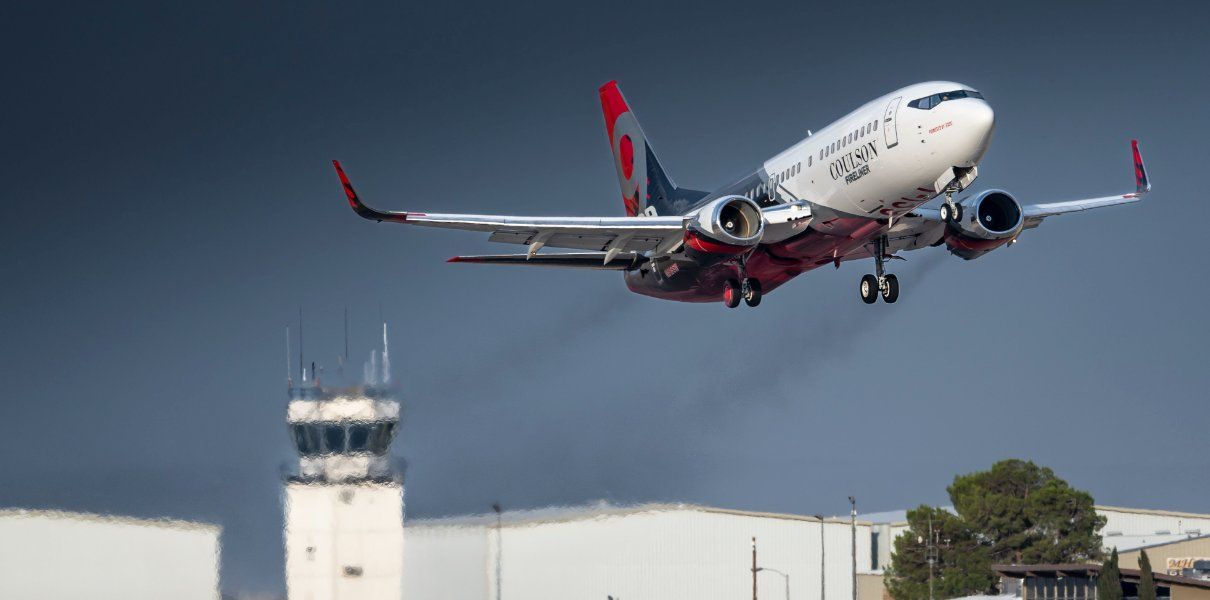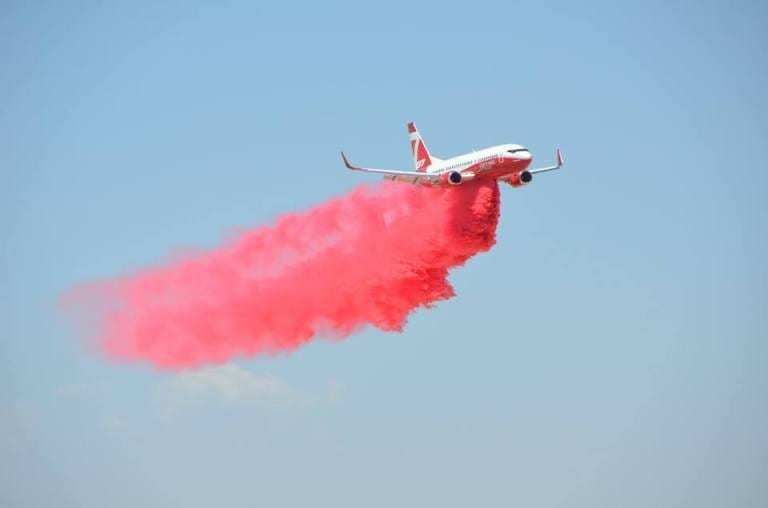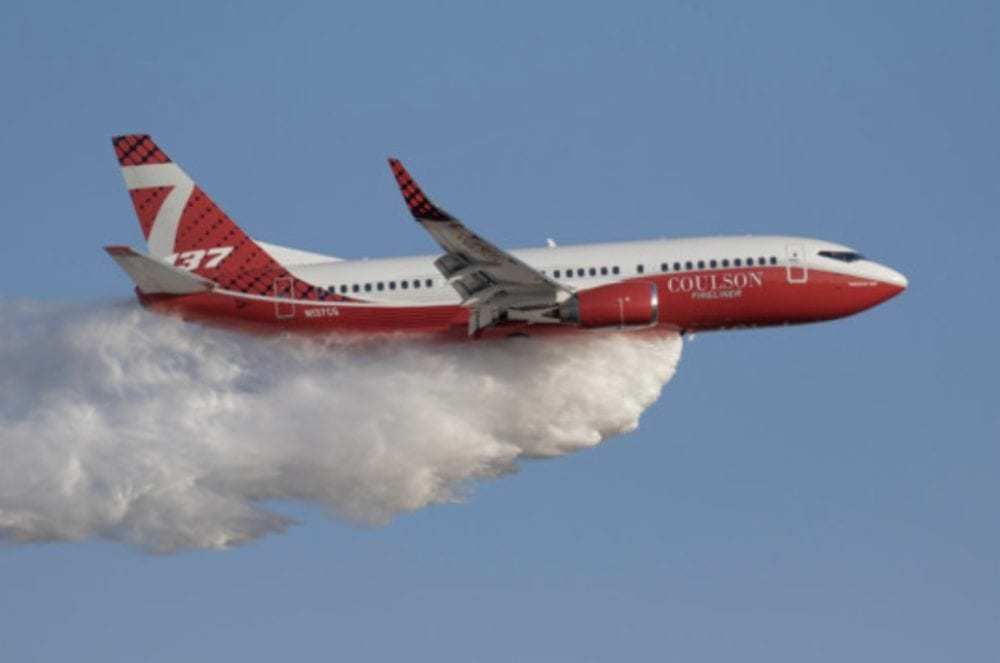Summary
- Converted 737 Fireliner can carry passengers with 66 seats
- Tank is a powerful and lightweight retardant delivery system
- Tank installs in 30 mins, piloted by cockpit interface for accurate drops
Coulson Aviation is the first company in the world to convert the passenger Boeing 737-300 into an approved Fireliner for aerial firefighting applications. The three-year-long modification began in 2017 on six Boeing 737-300 aircraft. After a series of regulatory approvals, the first converted jet performed its mission in 2018. This article lists several fast facts about the Boeing 737-based Fireliner.
1
It can carry passengers
The cabin interior and galleys remain in place
- Maximum Takeoff Weight (MTOW)
- Full retardant load
- Fuel for 4.5 hours of flight
While the ex-Southwest Airlines 737-300s have been converted to firefighting roles, the cabin interior and galleys remain in place in case the aircraft needs to switch roles during a passenger flight. In a standard 2-class configuration, the Boeing 737-300 can generally accommodate 126 passengers.
This is not the case for the converted 737 Fireliner, as it retains 66 seats in the cabin. The aircraft remains under its MTOW limit with the full fire retardant load and fuel. Britton Coulson, the Co-President of the Coulson Group, commented, as reported by the Boeing 737 technical site,
“With a full retardant load and 4.5 hours of fuel we are so far under max gross weight we are going to leave the full interior and galleys in even when just in airtanker mode.”
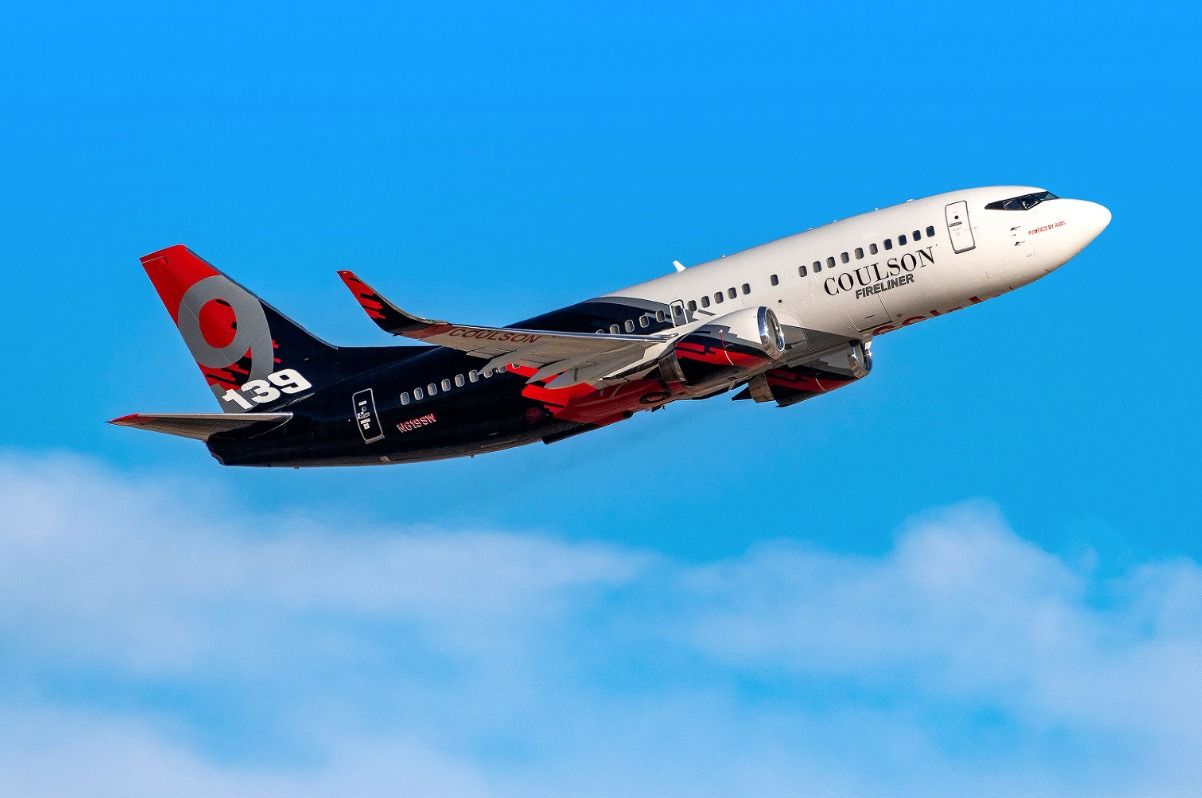
Related
Breaking: A Boeing 737-300 Has Crashed Fighting Fires In Australia
The two pilots are said to have sustained minor injuries.
2
Making the tanker compliant and operational
Number of technician hours for conversation: 43,000+
- Coulson Aviation has been in business for 36 years
- The company has 160,000 safe flight hours
- The company operates a diverse fleet of fixed-wing and rotary-wing aircraft
The Coulson-modified 737 FireLiner is one of a kind, making the company the first in the world to convert Boeing 737 commercial aircraft into firefighting tankers. The conversation about the massive Boeing 737 (relative to small biplanes) is a huge task that requires over 43,000 man-hours to complete.
Photo: Coulson Aviation
The company conducts a comprehensive flight test system to approve regulatory certifications, including those from the FAA in the US and EASA in Europe. Coulson Aviation states that each aircraft must be fully compliant and operational before it begins drop operations. The state-of-the-art tank is a simple yet effective design that is opted for by a range of firefighting aircraft globally.
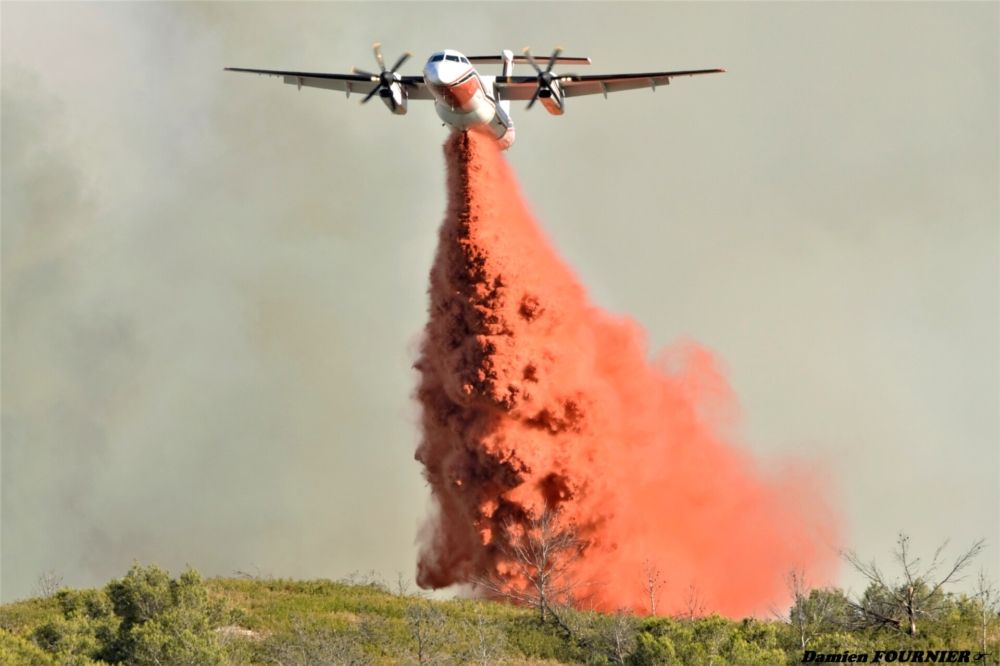
Related
Canadian Firefighting Outfit Conair Purchases 7 Dash 8s
The group owns the largest fleet of fixed-wing firefighting aircraft.
3
The tank sits in the cabin
The converted aircraft retains 66 seats
The 4,000-gallon tank sits inside the retrofitted cabin of the Boeing 737. The large tank can roll on and off, depending on the need. Coulson Aviation states that the tank’s simple yet effective design enabled the perfect flow of retardant with accuracy and precision. The system can be operated using a single button on the control column in the cockpit.
Photo: Coulson Aviation
The tank is installed closer to the center of the fuselage to control the CG of the aircraft during various phases of flight. While the cabin interior and galleys remain in place, operators can select the number of seats that must stay, particularly during training and exercise flights.
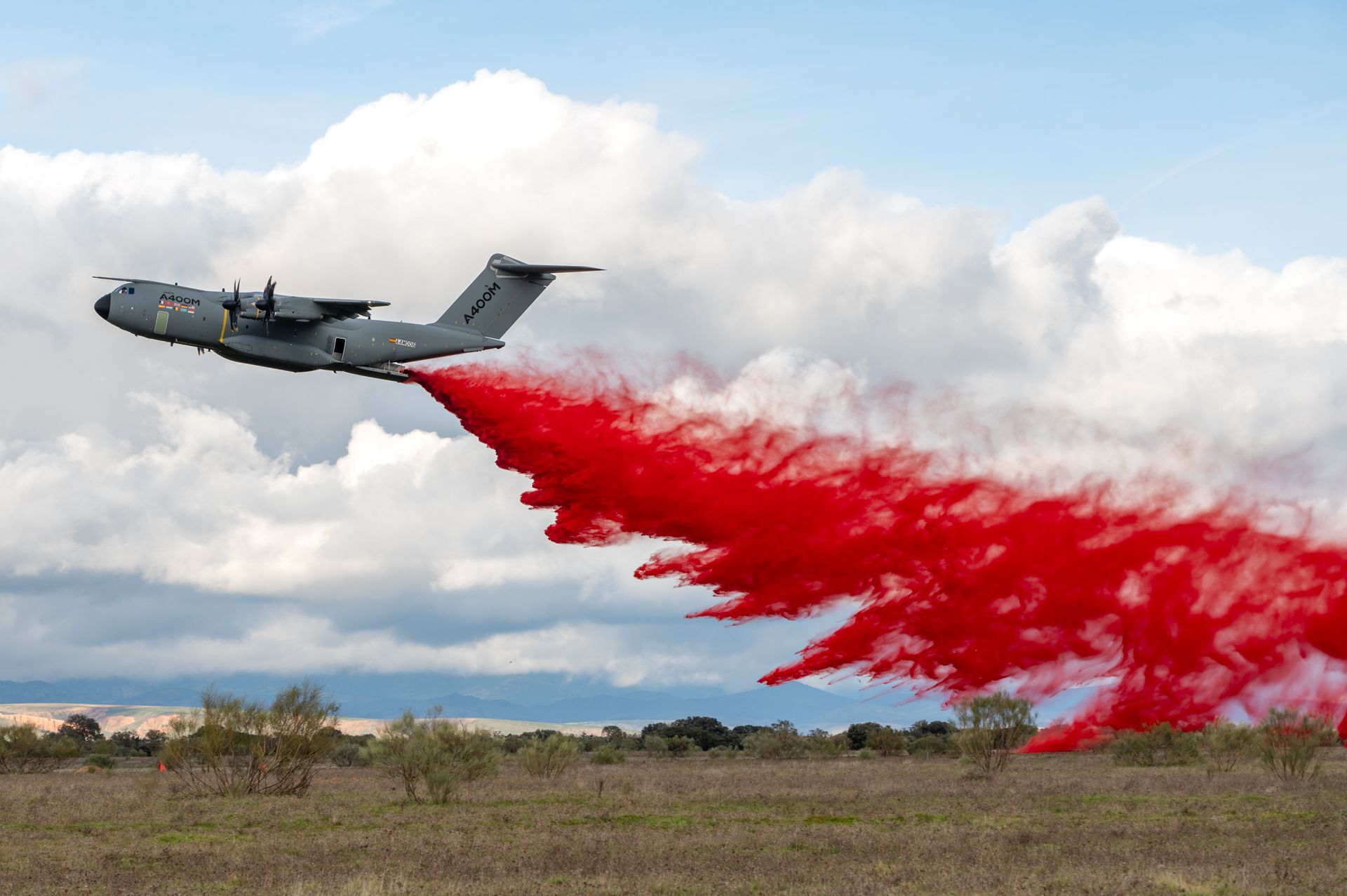
Related
Airbus Upgrades Firefighting Capabilities Of The A400M
The new roll-on/roll-off firefighting kit does not require any modification to the aircraft.
4
The powerful fire suppression system
Retardant Aerial Delivery System (RADS-XXL)
| RADS-XXL tank | Specifications |
|---|---|
| Flow rate | 1,600 gallons per second |
| The tank empties in | 2.2 seconds |
| Capacity | Up to 4,000 gallons |
| Empty weight | 2,300 lbs |
| Tank installation or removal | Under 30 minutes |
Coulson Aviation claims that the RADS-XXL is the most powerful retardant delivery system in the world, costing half the price of competing systems. The system is also significantly lighter (about one-sixth the weight of other systems) and requires no additional crew or equipment for operation.
Photo: Coulson Aviation
The tank can be installed or removed in under 30 minutes, making the aircraft reconfiguration quicker and simpler. Pilots can control the tank’s flow rate through the advanced cockpit interface. The real-time controller enables superior drop zone coverage and accuracy during missions. The same RADS-XXL system is used onboard the United States Air Force (USAF)’s C-130 Hercules aircraft.
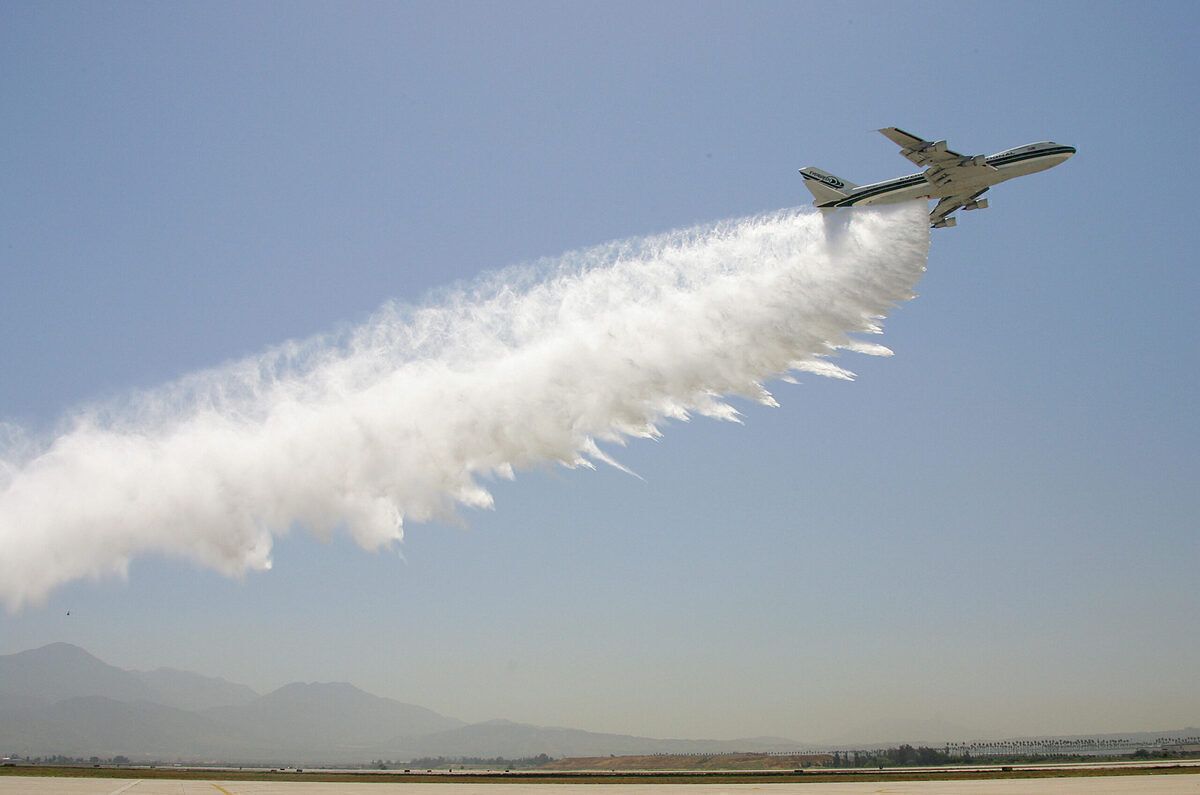
Related
How Do Firefighting Aircraft Work?
5
Controlling the center of gravity (CG)
The aircraft features gravity-based retardant tanks
The first aircraft (N617SW) was converted in 2017, and the gravity-based retardant systems were completed in December of the same year. Gravity-fed tanks allow the dumping of the entire load within seconds, although the onboard computerized system controls the drop rate.
The system enables equal distribution (during storage and dump) of the fluid, thereby restricting the CG shift. According to Coulson,
“The 4,000 USG RADS-XXL/2 performed perfectly as did the airplane. Our flight crew couldn’t have been happier with the handling characteristics and our split tank worked as designed with no CG shift during the drop.”
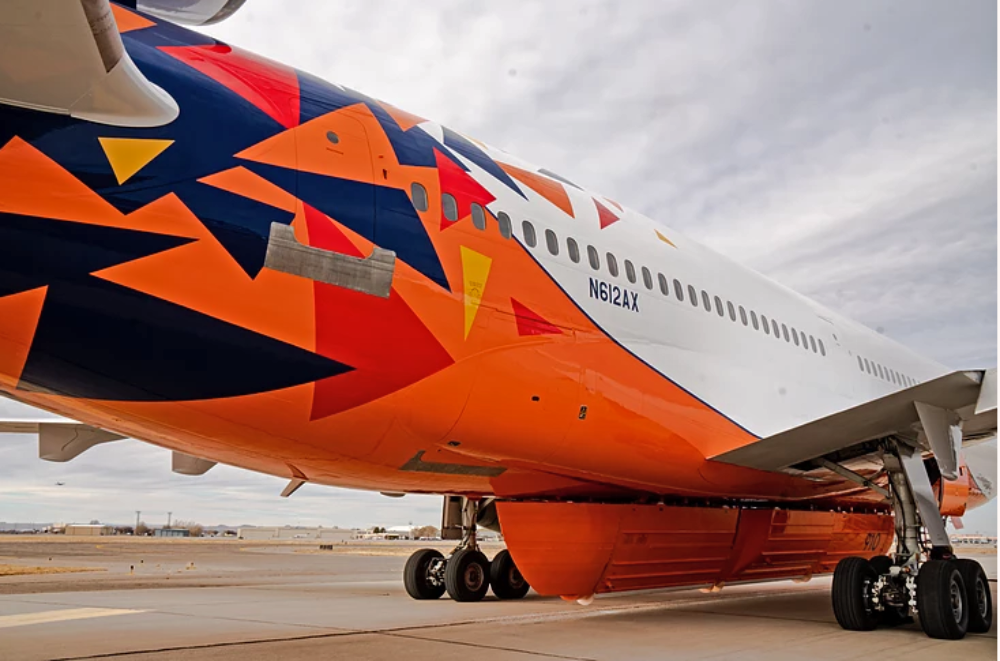
Related
10 Tanker Reveals Stunning New Firefighting DC-10 Livery
What are your thoughts on the uniquely modified Boeing 737-300 Fireliner? Share your views in the comments section.

